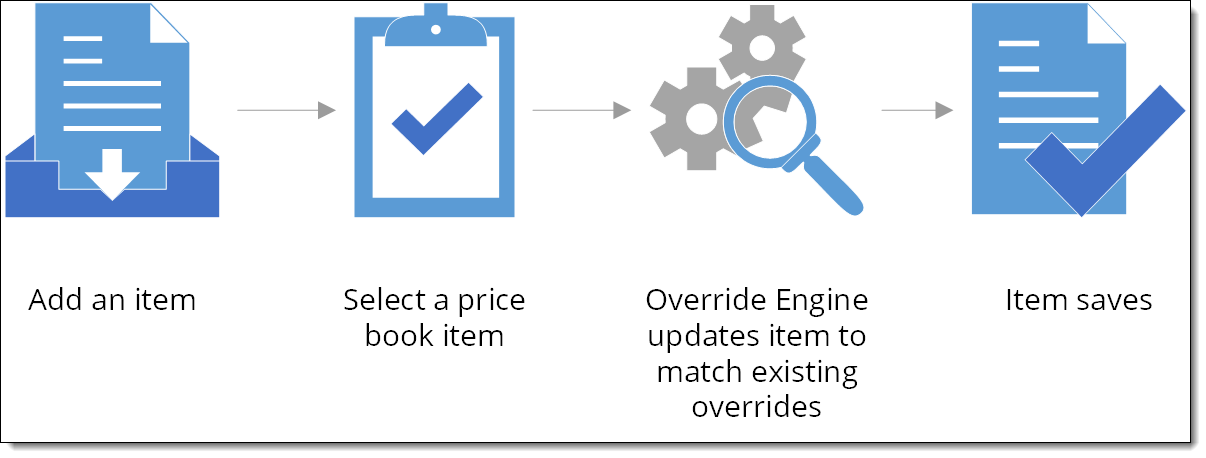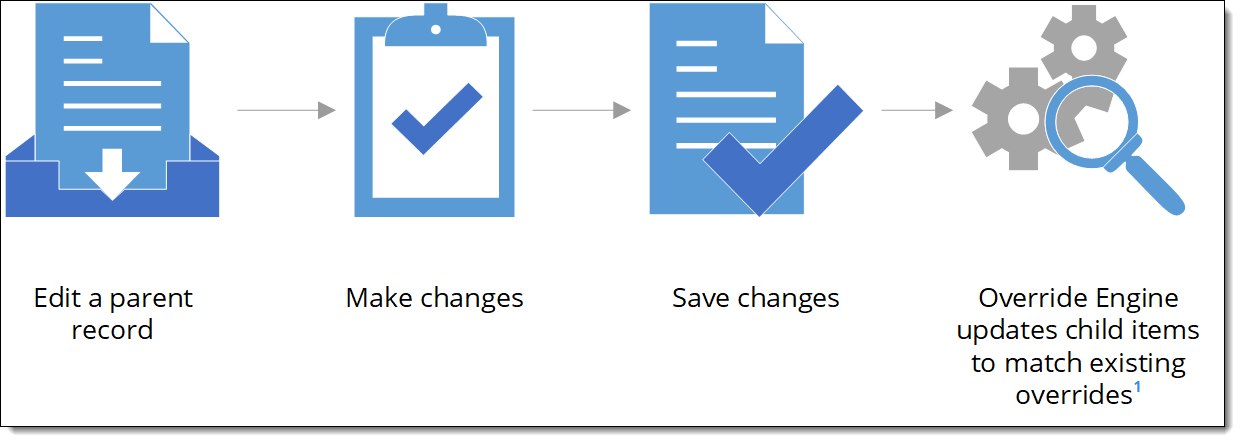Override Engine
Introduction
The Override Engine gives you the ability to override the price or cost of items dynamically based on criteria.
This powerful feature ensures contract compliance, maximizes revenue, provides greater margin assurance, and eliminates rogue discounting and pricing.
Prerequisites
To use the Override Engine, you need to:
| Have these user licenses | Have these permissions | Complete these tasks and review these topics before continuing |
|---|---|---|
Override Configurations
The Override Engine uses override configurations to control when price or cost overrides apply.
Examples
-
Applying cost overrides when a job is in a remote location
-
Price override applies depending on the Effective Date and Expiration Date of the override.
You can apply overrides to quote items, ticket items, and/or invoice items.
Override configurations have criteria that triggers overrides if a record meets the criteria.
Overrides
Overrides are the specific changes made to an item when it meets the criteria of an override configuration.
Example
Updates to a price of a ticket item when a job is for a specific customer.
When an override applies to an item, the item’s price changes automatically and you can’t change it manually.
Considerations
-
When a price/cost override applies to an item, the item’s price/cost stays locked and you can’t change it manually.
-
When you add a new price/cost override:
-
The override won’t apply to items added before that date.
-
The override will apply to items added after that date.
-
-
When you update a price/cost override:
-
The previous version of the override will apply to items added before that date.
-
The new version of the override will apply to items added after that date.
-
How Override Engine Works
The Override Engine works whenever you:
Add an Item
When you add a quote item, a ticket item, or an invoice item, this happens:
-
Add an item.
-
Select a price book item.
-
Override Engine updates item to match existing overrides.
-
Item saves.

Update an Item
When you update a quote item, ticket item, or invoice item, this happens:
-
Edit an item.
-
Make changes.
-
Override Engine updates item to match existing overrides.
-
Item saves.

Recommended Reading
-
Override Engine Setup - Learn how to set up the Override Engine.
-
FX CPQ Minimum Permissions - Learn the minimum permissions required to use the Override Engine.
